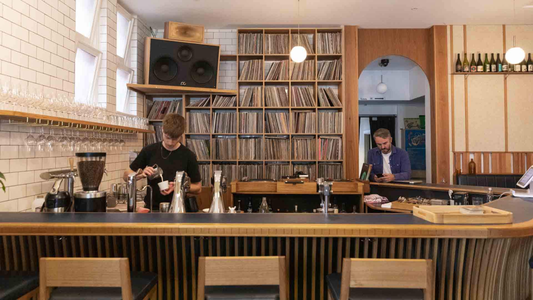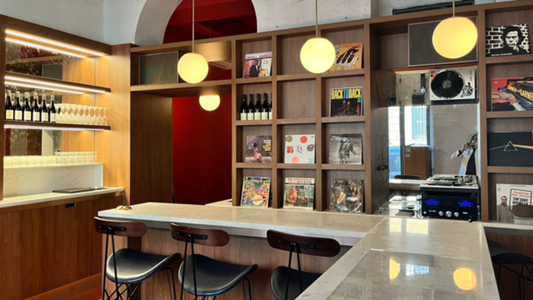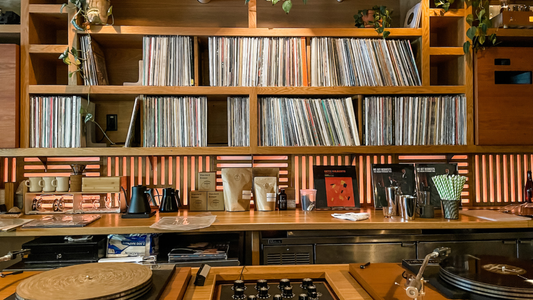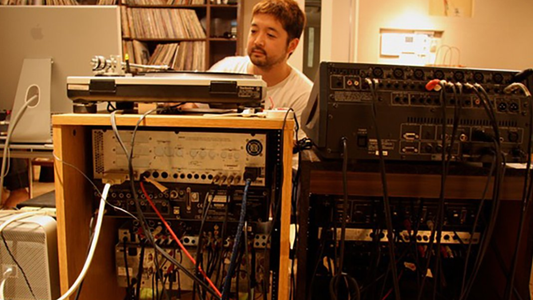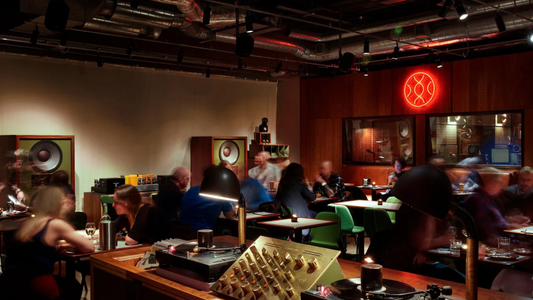
From Obscure to Essential — How the Japanese kissa tradition is redefining global nightlife.
By Rafi Mercer
It used to be a whisper.
An insider’s secret passed between record collectors, hi-fi obsessives and those who spent their weekends perched at the same barstool, watching the slow dance of a turntable arm. But somewhere between a global pandemic, the rise of the "quiet luxury" aesthetic, and the generational shift in how we value our time, the Japanese kissa-inspired listening bar has started edging into the light.
Not as a novelty. Not as a fetish object for music snobs.
But as a viable — and in some circles, highly coveted — way to spend an evening.
From Subculture to Status Symbol
For decades, listening bars were mostly the realm of the purist. Dimly lit rooms where the sound system cost more than the building lease, the vinyl was cleaned like it was a Ming vase, and any conversation above a murmur earned you a look. They weren’t places you stumbled into; they were destinations you were invited to, or found by accident after following a friend down a nondescript staircase.
Today, the landscape is changing.
In Mayfair and Manhattan, in Shoreditch and Shibuya, we’re seeing the kissa concept pop up in luxury hotels, high-end restaurants, and even members’ clubs — not because the owners have suddenly developed a taste for mono Coltrane pressings, but because their clientele are demanding more.
For ultra-high-net-worth individuals, a night out can’t just be expensive; it has to feel rare. The world’s top 0.1% already have access to the best restaurants, the most exclusive resorts, and private concerts on their yachts. What they can’t buy on demand is intimacy. A room where the music feels like it’s breathing just for them. A space where conversation doesn’t compete with the sound system, and where the choice of records tells them something about the curator’s soul.
That’s the genius of the listening bar: it offers exclusivity without excess. It’s the antidote to the velvet rope.
Gen Z: A Different Kind of Nightlife
At the other end of the spectrum, you have Gen Z — the first generation to grow up with streaming as the default, who nonetheless are driving a vinyl renaissance. They are more attuned than any generation before them to vibe as currency. They collect experiences, not just objects.
For them, the listening bar isn’t retro nostalgia; it’s a form of slow culture. A way to reclaim attention in a world of endless scroll. The best venues are more than bars — they’re cultural spaces, hosting curated album plays, deep-cut DJ sets, and even artist Q&As. And because the atmosphere is more conversational than clubland’s shoulder-to-shoulder chaos, it works as well for solo visits as it does for date nights or group hangs.
Gen Z also has no patience for bad sound. This is a generation raised on lossless streaming, noise-cancelling headphones, and studio-quality home setups — the baseline expectation is high. A venue with distorted mids and rattling bass bins isn’t “authentic”; it’s lazy. Listening bars, by design, remove that compromise.
The Post-Pandemic Shift
If you’re wondering why this is happening now, look to the last few years. The pandemic didn’t just shutter venues; it rewired the social contract. When people finally returned to public spaces, they did so with a more selective mindset. The casual, three-nights-a-week pub habit gave way to fewer but more intentional outings. If you’re going to leave the house, it has to be worth it.
Listening bars tick all the boxes of this new calculus:
- They offer a reason to dress up without feeling overdressed.
- They provide social connection without sensory overload.
- They give you something to focus on beyond alcohol consumption.
It’s an experience economy in microcosm.
Mainstream, But Not Mass-Market
There’s a danger, of course, in this rise to prominence. The kissa ethos — obsessive curation, reverence for sound, intimacy of scale — doesn’t naturally translate to high-volume turnover. The risk is that, as the format spreads, we’ll see watered-down “listening bars” that are really just restaurants with expensive speakers and a DJ booth wedged between the dessert station and the bathroom door.
But the venues getting it right understand that this isn’t about chasing trends; it’s about setting a tone. Whether you’re running a 20-seat hideaway in Dalston or a rooftop suite in Dubai, the secret is the same: you have to respect the room, the records, and the ritual.
What’s Next
We’re in the early days of the listening bar’s mainstream moment. Over the next decade, expect to see the concept pushed into new territories:
- Hybrid spaces blending hi-fi bars with live acoustic performance.
- Private listening rooms within hotels or clubs, bookable for small groups.
- Collaborations between audio brands, record labels, and hospitality operators to create signature sonic experiences.
For UHNWIs, it will become a discreet social currency — a way to host without spectacle. For Gen Z, it will be a point of difference in an otherwise homogenised nightlife scene. For the rest of us, it’s a chance to experience music the way it was meant to be heard: up close, unhurried, and in good company.
Maybe the listening bar will never be truly mass-market — and maybe that’s the point.
In an age of infinite choice, the most valuable thing a venue can give you is the feeling that you were in the right place, at the right time, and that someone, somewhere, cared enough to make sure the music sounded just so.
Rafi Mercer writes about the spaces where music matters. For more stories from the Tracks & Tales, subscribe, or click here to read more.

